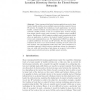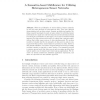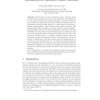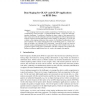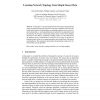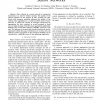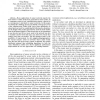DCOSS
2007
Springer
14 years 5 months ago
2007
Springer
Many emergent distributed sensing applications need to keep track of mobile entities across multiple sensor networks connected via an IP network. To simplify the realization of suc...
DCOSS
2007
Springer
14 years 5 months ago
2007
Springer
With the proliferation of various kinds of sensor networks, we will see large amounts of heterogeneous data. They have different characteristics such as data content, formats, mod...
DCOSS
2007
Springer
14 years 5 months ago
2007
Springer
We introduce a class of anchoritic sensor networks, where communications between sensor nodes are undesirable or infeasible due to, e.g., harsh environments, energy constraints, or...
BTW
2007
Springer
14 years 5 months ago
2007
Springer
: The emerging trend towards seamless monitoring of all business processes via comprehensive sensor networks – in particular RFID readers – creates new data management challeng...
BIOWIRE
2007
Springer
14 years 5 months ago
2007
Springer
Emerging pervasive computing technologies such as sensor networks and RFID tags can be embedded in our everyday environment to digitally store and elaborate a variety of informatio...
AI
2007
Springer
14 years 5 months ago
2007
Springer
In this paper, we present an approach for recovering a topological map of the environment using only detection events from a deployed sensor network. Unlike other solutions to this...
VTC
2007
IEEE
14 years 5 months ago
2007
IEEE
— Data collected in a sensor network is transported hop-by-hop to a sink for further analysis. The quality of the analysis depends on the amount of data reaching the sink. Hence,...
SSDBM
2007
IEEE
14 years 5 months ago
2007
IEEE
The ability to provide reliable in-network storage while balancing the energy consumption of individual sensors is a primary concern when deploying a sensor network. The main conc...
RTSS
2007
IEEE
14 years 5 months ago
2007
IEEE
— Many applications of sensor networks require the base station to collect all the data generated by sensor nodes. As a consequence many-to-one communication pattern, referred to...
PERCOM
2007
ACM
14 years 5 months ago
2007
ACM
A substantial amount of research on routing in sensor networks has focused upon methods for constructing the best route, or routes, from data source to sink before sending the dat...
